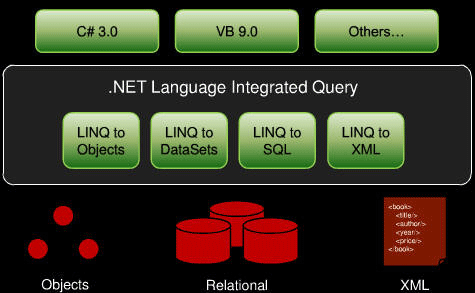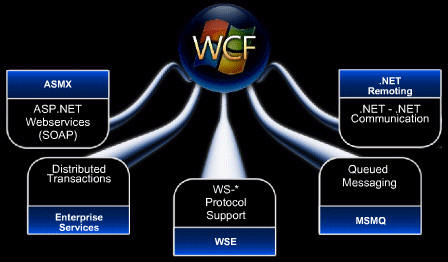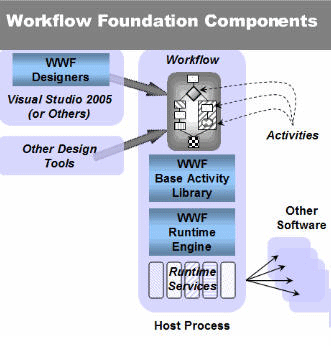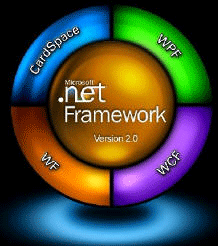|
Products
Database Search Solution (New Version) Search Control SEO Pager Highlighter Shortcut Controls Crypt Package Free ASP.NET Controls
Geotargeting Component ASP.NET Media Player Control Flash Video Player Control Services
ASP.NET Telecommute Jobs Free IP Location Lookup Test .Net Regular Expressions CSS/Table/DIV Page Layouts Custom Programming Article Sites Master List |
Differences between .Net Framework 2.0 and 3.5Microsoft is always been stepping ahead of its competitors by bringing great new features and products in the market. Specially for developers Microsoft based technologies are like a dream come true. Considering from development point of view the latest product in Microsoft Box is Visual Studio 2008. The new development environment comes with tons of new features and design differences. .Net Framework 3.5 is ready to make futuristic websites with its extremely easy to use interface, rich accessibility features and new design that allows to reduce the time and efforts in website development. One thing that was lagging in .net framework 2.0 was multi targeting. As in .Net framework 2.0 or framework 1.1 there was a separation in terms of development. Like one builds a site in framework 1.1 would have to use Visual Studio 2003, and for development in framework 2.0 we need to work in Visual Studio 2005. What Visual Studio 2008 has offered a great new experience to target multiple frameworks in one place. Major advancements have arrived in new framework. Ajax extensions comes built in in .net framework 3.5. Support to place web parts in update panel is also supported.This new built in support has allowed us to create more rich and cross platform Ajax application easier. Apart from this, the extensive set of Ajax templates are also provided in the new framework support. ASP.net 3.5 enhancements for Ajax are totally rewritten for performance and new control types. The existing role management, authentication and authorization are now available as a service. Now we can merge two or more assemblies into one .net assembly with the new .net merge tool. The new controls introduced in Asp.net are LinqDataSource, ListView and DataPager. Talking of framework 3.5, if is a sequel to framework 3.0, and is the latest in frameworks. Its service pack 1 has been released but it is still not comes in windows server 2008. Microsoft has also release a beta version of Framework 4 and Visual Studio 2010 which is available for download. One of the major advancement in Framework 3 and 3.5 is LINQ, though we can use LINQ in Framework 2 as well after installing a separate executable, which is now fully supported automatically. Linq allows us to use and interact with data as an object. Now no matter what type of data we have we can play with them using Linq easily. In Figure below we can have an understanding of the architecture of Linq.  There is rich support for JavaScript coding, debugging, profiling and management in new framework. There is added extended support for JSON, there is design time code validation and checks, also, new design time editor support is provided. If we have a cross chart of major advancements in framework, New in .NET framework 2.0It brings a lot of evolution in class of the framework
and refactor control including the support of New in .NET framework 3.0Also called WinFX,includes a new set of managed code
APIs that are an integral part of Windows Vista and Windows Server 2008
operating systems and provides New in .NET framework 3.5It implement Linq evolution in language. So we have the
following evolution in class: If we take a look into .net Framework 3.0, we clearly see four major break troughs
Windows Card SpacesWindows card space is a specialized library for identity and authentication. Three main component are Info Card, Digital Identity and Identity Provider. IT provides enhanced security techniques which helps developers to develop more secure and durable websites. Windows Presentation FoundationWindows Presentation Foundation or code name Avalon is built for rich media graphics, it is a replacement for windows GDI graphics library. It is a one stop shop for Forms, media, documents and 3d graphics. It is based on XAML (eXtensible markup language) which provides a bridge between developer and graphics designer. Silver Light also uses XAML for displaying its content. Windows Communication FoundationWindows Communication foundation or code name Indigo is SOA (Service oriented applications) and built on rich service oriented architecture. The remoting architecture is changed a lot in WCF. WSE 3 introduced with enhance upgrades to Web services. Support of distributed transactions and Message queing are totally rewritten.  Windows Workflow FoundationIt is a workflow foundation for windows based application. It provides both sequential workflows as well as State based workflows. We get a more process oriented view of Software development. Workflows help define the process of an application in a more elite manner.  More notable of point is that .Net
3.5 is not visible in IIS as a separate version, we can just see .Net 2.0 even if
there is .Net framework 3.5 installed. Even in windows .Net framework folder, the
.Net Framework 3.5 core files reside in .Net framework 2.0 folder and only WPF and
WCF libraries are in Framework 3.5 folder. This means that Framework 3 or 3.5 is
a wrapper upgrade to Framework 2.0, with support for cross platform and cross framework
integration and development. All in all, .Net framework 3.0 and
above is lot more enhanced and still getting better for Rich Internet Applications
and Service oriented applications. It is keep getting better and better. As
Microsoft's passion is our satisfaction. Written by: Ali Sufyan Tutorial toolbar: Tell A Friend | Add to favorites | Feedback | |


